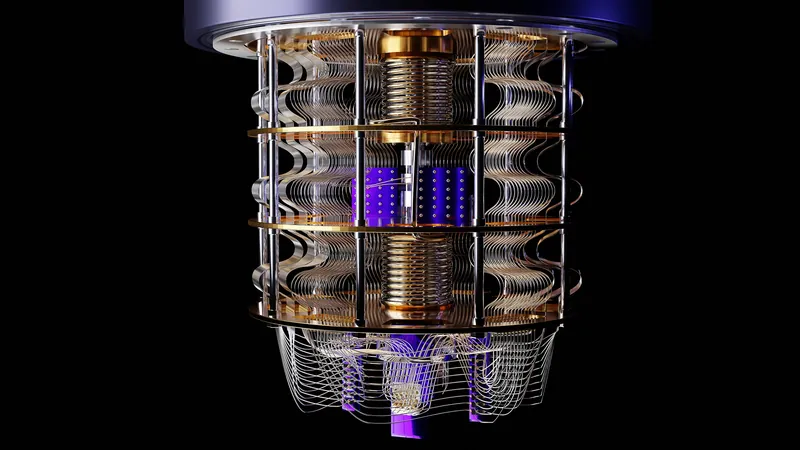
Revolutionizing Quantum Computing: USC's Breakthrough in Quantum Gate Error Analysis
2025-05-08
Author: Yu
Unlocking Quantum Computing's True Potential
Researchers at USC have unveiled a groundbreaking new method for benchmarking quantum gates that could supercharge the journey towards reliable quantum computers. Published in Chemical Reviews, this innovative protocol—dubbed deterministic benchmarking (DB)—promises a more precise and efficient approach to pinpointing quantum noise and errors, crucial for advancing fault-tolerant quantum computing.
The Quantum Gate Dilemma
Quantum computers hold the key to solving complex problems that traditional computers struggle with. However, their success hinges on the performance of quantum gates, the operations that manipulate qubits—the quantum equivalent of classical bits. Unfortunately, these gates are highly susceptible to noise and miscalibration, making accurate computations a significant challenge.
Understanding Quantum Errors
Errors fall into two main categories: coherent and incoherent. Coherent errors are repeatable and can lead to accelerated error accumulation, jeopardizing the accuracy of quantum algorithms. Conversely, incoherent errors stem from interactions with the environment, diminishing the quantum advantage entirely.
Eli Levenson-Falk, a co-author of the study, emphasizes the critical need for precise error benchmarking. "Our approach distinguishes between various error types, especially the more harmful coherent errors," he asserts, highlighting the necessity for tailored error mitigation strategies.
The Efficiency of Deterministic Benchmarking
DB represents a significant leap forward. Unlike conventional methods that rely on random sequences for error assessment, DB utilizes a fixed set of simple pulse-pair sequences to identify specific error sources. This targeted approach not only improves efficiency but also provides valuable insights overlooked in more traditional metrics.
Game-Changer for Quantum Research
The USC team showcased DB on a superconducting transmon qubit, a staple in quantum computing, demonstrating its ability to detect subtle parameter changes invisible to standard techniques. Lidar highlights how DB's rich informational capacity facilitates better gate calibration and resource efficiency—requiring fewer experimental runs than its predecessor, randomized benchmarking.
Broader Implications for Science
The ramifications of this research extend far beyond the realm of quantum computing. Enhanced gate operations are vital for accurate simulations in quantum chemistry and materials science, bringing us one step closer to realizing the full capabilities of these advanced technologies.
Future Prospects of DB
Looking ahead, the researchers are keen to adapt DB for two-qubit gates, paving the way for more sophisticated quantum circuits. They are also exploring applications of this methodology across various quantum computing platforms, including trapped ions and photonic systems.
Meet the Research Team
Led by experts Lidar and Levenson-Falk, this study also includes co-lead authors Vinay Tripathi and Daria Kowsari, alongside Kumar Saurav and Haimeng Zhang, all from USC. Their groundbreaking work was supported by prominent organizations, including the National Science Foundation and several military research grants.





 Brasil (PT)
Brasil (PT)
 Canada (EN)
Canada (EN)
 Chile (ES)
Chile (ES)
 Česko (CS)
Česko (CS)
 대한민국 (KO)
대한민국 (KO)
 España (ES)
España (ES)
 France (FR)
France (FR)
 Hong Kong (EN)
Hong Kong (EN)
 Italia (IT)
Italia (IT)
 日本 (JA)
日本 (JA)
 Magyarország (HU)
Magyarország (HU)
 Norge (NO)
Norge (NO)
 Polska (PL)
Polska (PL)
 Schweiz (DE)
Schweiz (DE)
 Singapore (EN)
Singapore (EN)
 Sverige (SV)
Sverige (SV)
 Suomi (FI)
Suomi (FI)
 Türkiye (TR)
Türkiye (TR)
 الإمارات العربية المتحدة (AR)
الإمارات العربية المتحدة (AR)